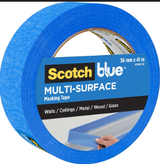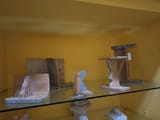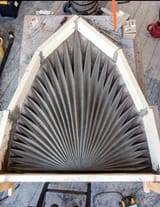>>2928299 (OP)I'm getting into designing, making and installing decorative plasterwork. It's a massive topic and 95% of people who want to get into it don't have the skills to make anything interesting that won't fall apart.
It's meant to be painted with soft distemper that can be washed off when you need to, but most has historically been fucked by layers of modern paint that ruin detail and take an age to remove. A colour scheme takes patience and smaller brushes, who'd have known?
Repairing missing sections (if the substrate is okay) is easy if you know the materials, you're just copying and filling like for like.
You ideally need a good substrate of lime plaster, which flexes with building and is very durable - plasterboard is completely inappropriate and a pile of shit and you're a faggot if you install it.
You can start your desgin by running plaster along your dies like other anon posted with layers increasing in finer agrigates until you use a finish like plaster of Paris. You can then apply moulded or pre sculpted elements adhered with plaster, sometime you might want to create armatures on the ceiling and sculpt directly - in lime or gypsum.
It's very up to personal taste how you want to do it, and is a problem solving exercise in every design choice.
But the materials are quite clear if you want it to last and have a legacy - nobody in their right mind would get rid of a finely crafted and high quality ceiling by a decent artist. The traditional materials and techniques were developed over thousands of years and don't have a decent replacement. The imitation ceilings are being removed ultimately.
I have an 19th century book on the topic and I'm trying to work out how to make a jig to produce receding fluted columns for my house, but it's in dense Victorian technobabble.
Here's a work of mine before pouring the mould. It will be laid back to back to make a 6ft ceiling rose, and then cut into quarters to fill the quadrants of the ceiling




